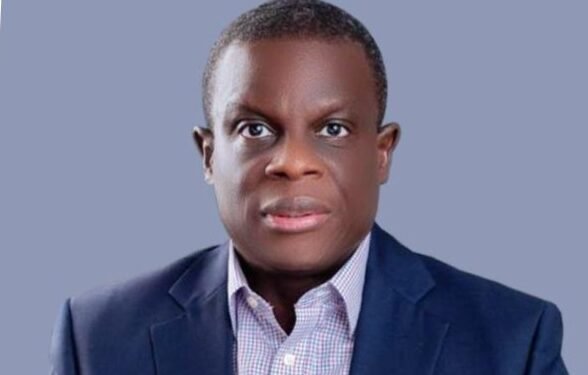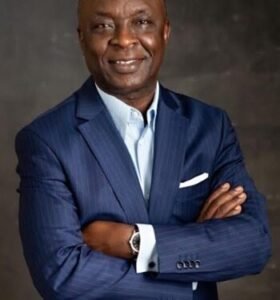
Fintech in Nigeria has experienced explosive growth, with platforms like OPay, Moniepoint, PalmPay, and PiggyVest redefining payments, savings, lending, and wallet services. Yet, despite the rapid innovation, roughly half of Nigerian adults still lack access to formal banking services. According to Olu Akanmu—the former Co‑CEO of OPay and Executive in Residence at Lagos Business School—the fintech boom has largely catered to the already banked and underbanked, leaving millions untouched by these digital solutions.
Akanmu highlights that about 50 percent of Nigerians remain financially excluded, even as fintech companies succeed in onboarding multiple accounts for individuals who already had some level of financial access. “Much of what we’re doing in fintech is about serving the previously banked,” he said on Channels Television. “[The focus on] people getting a second or third account—rather than unbanked households—means we still have much more work to do, especially among women and northern communities”
Despite historic efforts by the Central Bank and digital innovation, EFInA’s 2023 report estimates that 28.8 million Nigerian adults remain excluded from all formal financial systems. NIBSS and AfricaNenda Foundation note that over 400 million Africans across the continent face exclusion, despite pervasive mobile penetration .
Why the Gap Persists
1. Focus on the Already Connected
Akanmu argues that despite fintech’s reach, “banked but underserved” populations receive the majority of focus—leading to multiple accounts for those already engaged with formal finance. Deepest challenges remain in rural and marginalised regions, particularly among women and informal economy workers.
2. Infrastructure and Connectivity
Many Nigerians, especially in the South‑South and South‑East, simply lack reliable internet or electricity. Despite broader awareness of digital banking (only ~36%), actual usage remains low (around 37%) in these regions, primarily due to poor network quality and infrastructure deficits .
3. Trust and Identity Barriers
Financial inclusion hinges on trust—both in institutions and digital identity. Previous studies note that social mistrust, anxieties around data privacy, and limited digital identity adoption remain significant hurdles. Without a robust identity framework accessible to all, deep inclusion is unattainable
4. Accessibility and Business Model Gaps
Fintech models that rely heavily on smartphones or internet access exclude those with feature phones or limited literacy. Nearly 61% of financially excluded adults use basic mobile phones—many fintech interfaces are unsuitable or inaccessible for them .
How Other African Markets Compare
Across Africa, more than 400 million people remain unbanked, despite high mobile and fintech adoption. Lessons from countries like Kenya show that even with similar fintech advances, excluding rural, female, or informal workers perpetuates exclusion. Nigeria is not unique—but its exclusion rate is among the worst for large economies.
What Fintechs Can Do According to Experts
-
Expand Agent & USSD Channels: Platforms like Moniepoint demonstrate the power of agent-based banking—rural agents can deliver services to unbanked communities.
-
Design for Feature-Phone Users: Ensure USSD-first products targeting low-literacy customers.
-
Prioritise Women & Rural Outreach: Tailored campaigns, trust-building partnerships, and multilingual interfaces help.
-
Integrate Digital Identity: Widespread adoption of NIN, eNaira, and easy KYC helps streamline access—when identity tools reach all areas.
-
Develop Financial Literacy: Many excluded adults cite lack of understanding or fear of formal institutions—education remains key.
-
Forge Partnerships: Collaborative models between fintechs, mobile money providers, NIMC, and community groups help unlock last-mile coverage.
Tech-Driven Inclusion: Success Stories
-
PiggyVest repackaged the traditional “kolo” and “ajo” savings system into smartphone apps, gaining traction among previously underserved segments. The model grew from peer-based savings to a scalable digital group savings tool, bringing over 53,000 users onboard by 2018, and motivating broader savings habits in Nigeria.
-
Agent Banking by Moniepoint and OPay: These fintechs expanded access in communities by placing agents within local markets and neighborhoods. Transactions like deposits, withdrawals, bill payments, and loans became instantly accessible—even in low-coverage areas.
Why Scale Still Eludes Fintech
Despite growth, the space faces major hurdles:
-
Regulatory Uncertainty: Frequent shifts—such as onboarding freezes and ambiguous licensing—create caution for startups, especially when addressing underserved markets.
-
Funding Gaps: Investors often shy away from models targeting low-income customers due to thinner margins.
-
Infrastructure Gaps: Under-resourced internet infrastructure and high telecom costs remain significant barriers.
-
Inattention to Trust: For many rural Nigerians, formal institutions still provoke distrust. Without intentional trust-building strategies, digital solutions may be unused.
What the Data Shows
| Metric | Value |
|---|---|
| Financially excluded Nigerian adults | Approximately 50% (28.8 m people) |
| Adults with bank accounts | Roughly 50% or slightly higher |
| Fintech adoption among banked | High—double or triple account holders common |
| eNaira wallet users | <0.5%, many inactive after one year |
| Cashless transaction growth (2023) | +45% YOY to US$85billion |
The digital currency initiative, eNaira, intended to deepen inclusion, failed to gain widespread usage. Within one year of launch, fewer than 0.5% of Nigerians actively used the digital wallet, partly due to usability concerns and lack of integration with underserved populations
Recommendations from Olu Akanmu & Others
-
Refocus Inclusion Strategy: Akanmu urges fintechs to stop targeting the already banked and double-accounting, and instead aggressively tackle the financial needs of truly unbanked Nigerians—especially women, low-income, and rural residents .
-
Strengthen E-identity Access: Without inclusive digital identity, fintech remains limited in reach.
-
Design Accessible Services: USSD, agent banking, minimal documentation, and multilingual USSD prompts can drive deeper usage.
-
Invest in Trust Mechanisms: Behavioural incentives, agent relationships, and transparency tools (like dispute resolution) build trust.
-
Collaborate With Government & NGOs: Fintech-local authority partnerships can scale functional inclusion faster.
\\Why It Matters
Insufficient banking access hampers economic activity—microentrepreneurs can’t save or borrow easily, healthcare payments remain in cash, remittances become costly, and benefits like mobile lending or insurance stay out of reach.
With a young, tech-savvy population of over 200 million and smartphone penetration over 70%, Nigeria can bridge the gap if fintechs, policymakers, and regulators align around truly inclusive access strategies.
Conclusion
Fintech has opened new pathways—billions in transactions, millions of accounts, and faster services. But when half the adult population remains unbanked, inclusion cannot be declared a success.
As Olu Akanmu notes: “There is no unprofitable segment—it’s the business model that fails.” Fintechs must now evolve beyond serving those already within the system and reach those still excluded. Only then can Nigeria move from digital innovation to financial inclusion at full scale.
Nigeria’s fintech potential is real—but reaching it depends on whether we can finally make the unbanked feel included.








